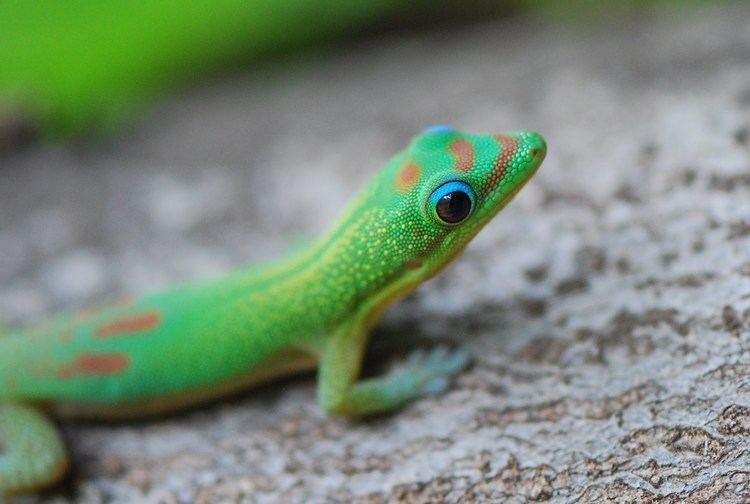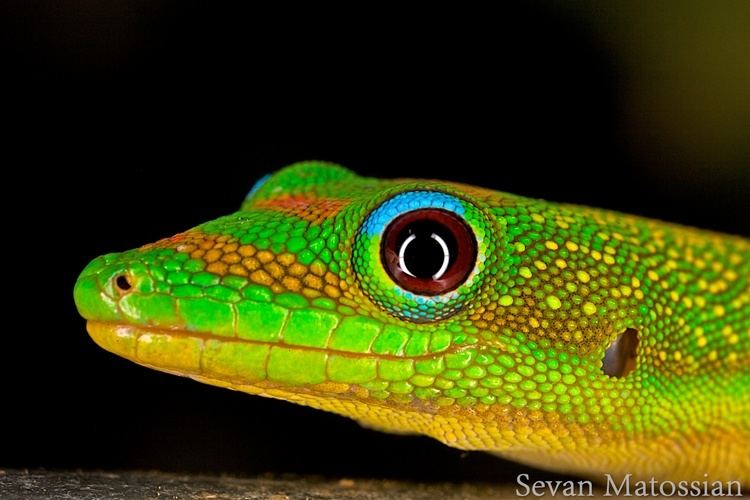Higher classification Phelsuma | Phylum Chordata Scientific name Phelsuma laticauda Rank Species | |
Similar Phelsuma, Reptile, Phelsuma grandis, Phelsuma madagascariensis, Madagascar day gecko | ||
My gold dust day gecko in exo terra terrarium 18x18x24 sri habitat lizards reptile monsoon phelsuma
The gold dust day gecko (Phelsuma laticauda ) is a diurnal species of gecko. It lives in northern Madagascar, and on the Comoros, it has been also introduced to Hawaii and other Pacific islands. It typically inhabits various kinds of trees and houses. The gold dust day gecko feeds on insects and nectar. It is commonly known as the mascot of GEICO.
Contents
- My gold dust day gecko in exo terra terrarium 18x18x24 sri habitat lizards reptile monsoon phelsuma
- My first gecko hatchlings setting up juvenile gold dust day geckos
- Description
- Diet
- Males
- Reproduction
- Care and maintenance in captivity
- References

One subspecies is recognized (in addition to the nominate one): Phelsuma laticauda angularis.
My first gecko hatchlings setting up juvenile gold dust day geckos
Description

This lizard belongs to the smaller day geckos, and can reach a total length of about 15–22 cm (6–9 in). The body colour is a bright green or yellowish green or rarely even blue. Typical for this day gecko are the yellow speckles on the neck and the upper back. There are three rust-coloured transverse bars on the snout and head; the upper part of the skin around the eye is blue. On the lower back there are three tapering red bars. The tail is slightly flattened. The under side is off-white.
Diet

These day geckos feed on various insects and other invertebrates, and are also capable of eating other smaller lizards. They also eat soft, sweet fruit and pollen and nectar from flowers, often congregating in groups of many individuals to feed off of one plant.
Males

The males of this species are rather aggressive and can be quite quarrelsome. They do not accept other males in their territory. In captivity, where the females cannot escape, the males may also seriously wound a female. In this case, the male and female can be separated.
Reproduction

The females lay up to 5 pairs of eggs. At a temperature of 28 °C, the young will hatch after approximately 40–45 days. The juveniles measure 55–60 mm. They should be kept separately since even the juveniles can be quite quarrelsome. Sexual maturity is reached after 10–12 months.
Care and maintenance in captivity

These animals should be housed singly or in pairs and need a large, well-planted terrarium. The temperature should be about 28 °C during the day and drop to around 20 °C at night. The humidity should be maintained between 65 and 75%. In captivity, these animals can be fed with crickets, wax worms (wax moth larva), fruit flies, maggots, meal worms and houseflies.
